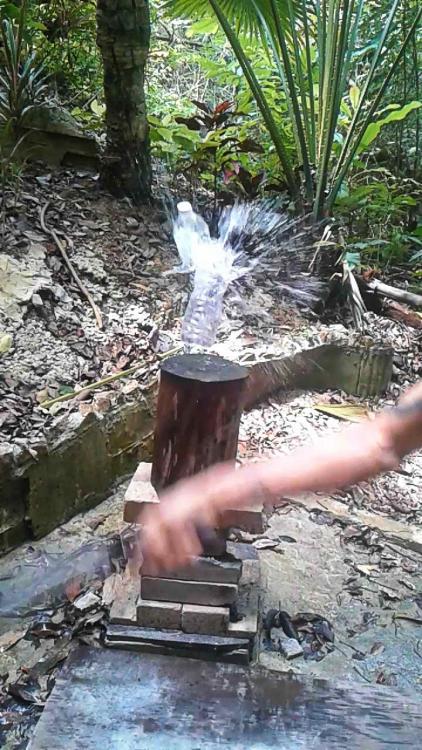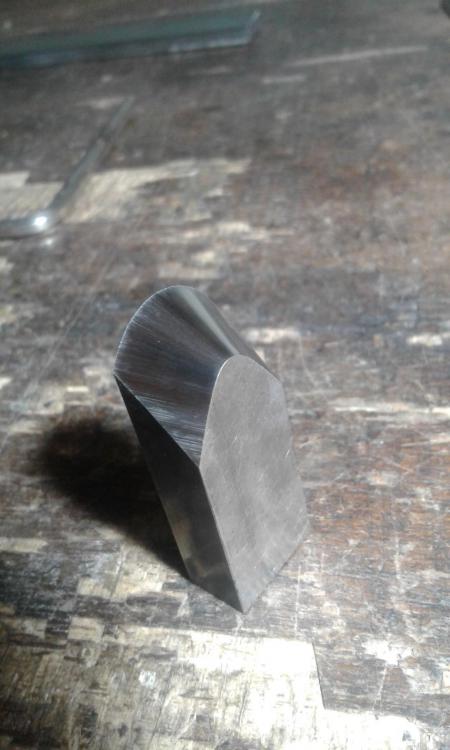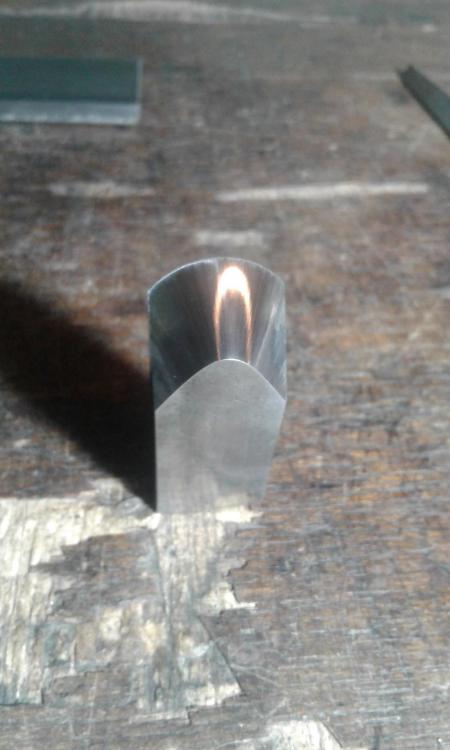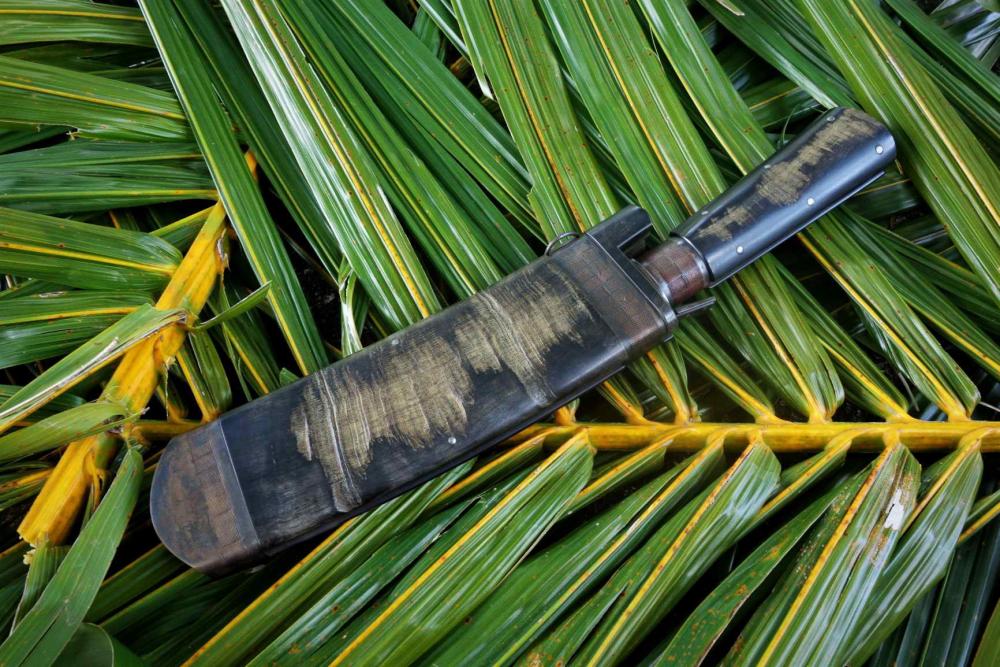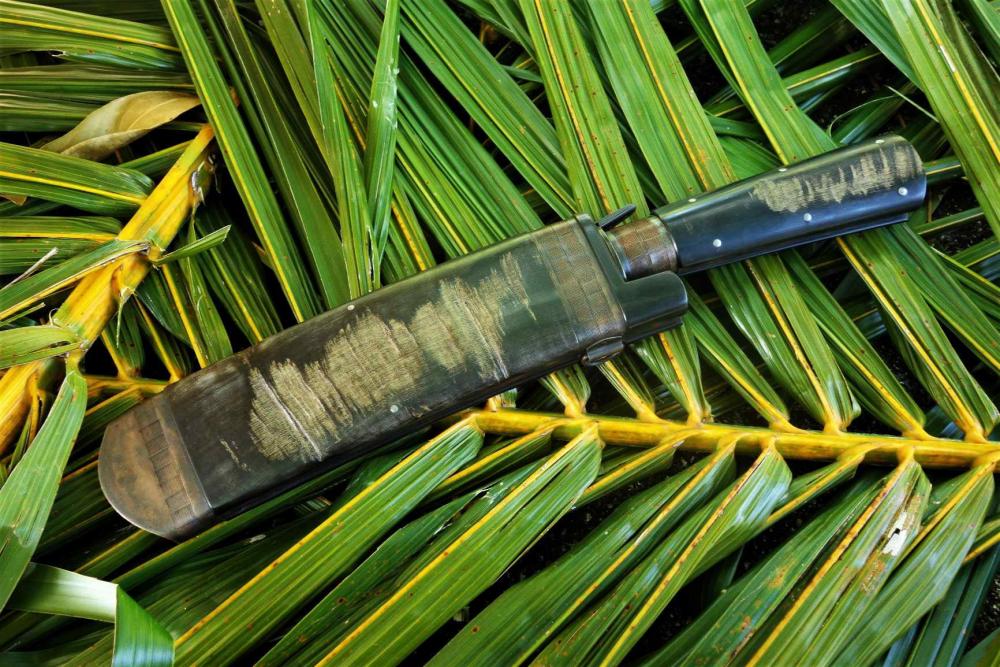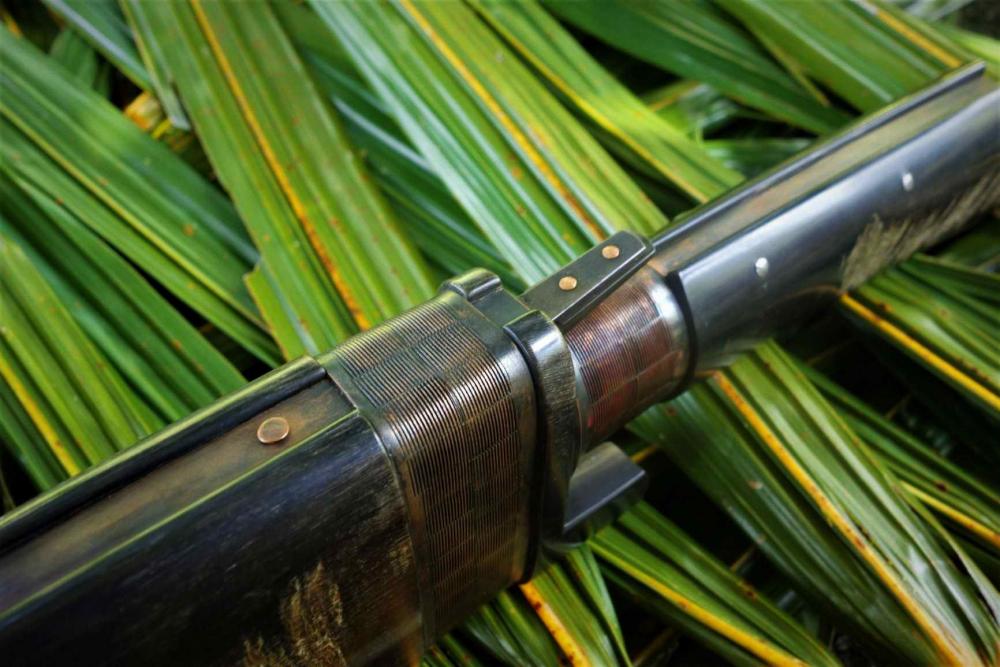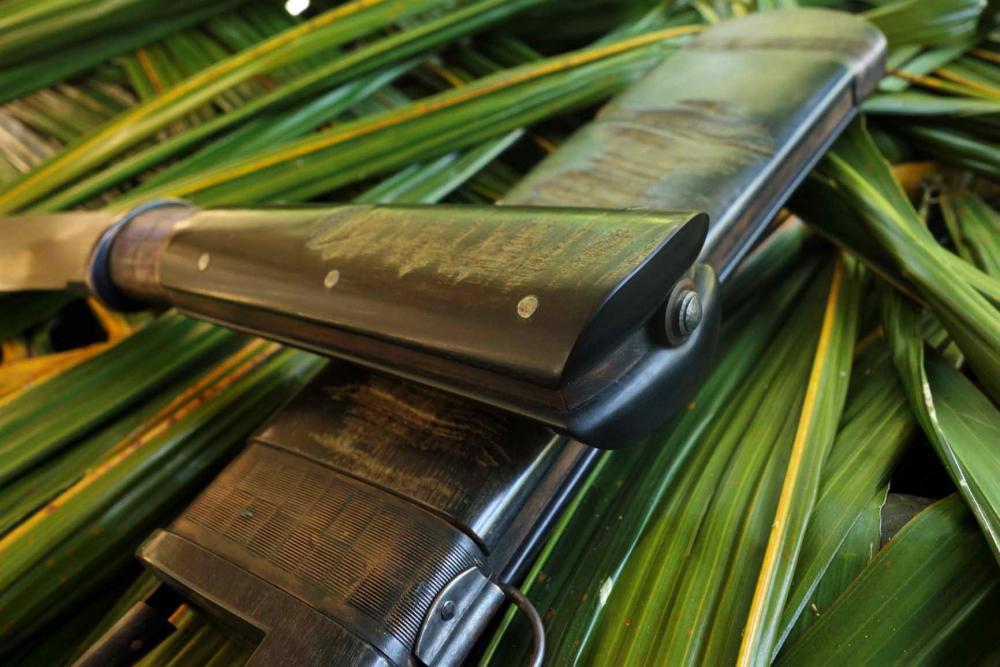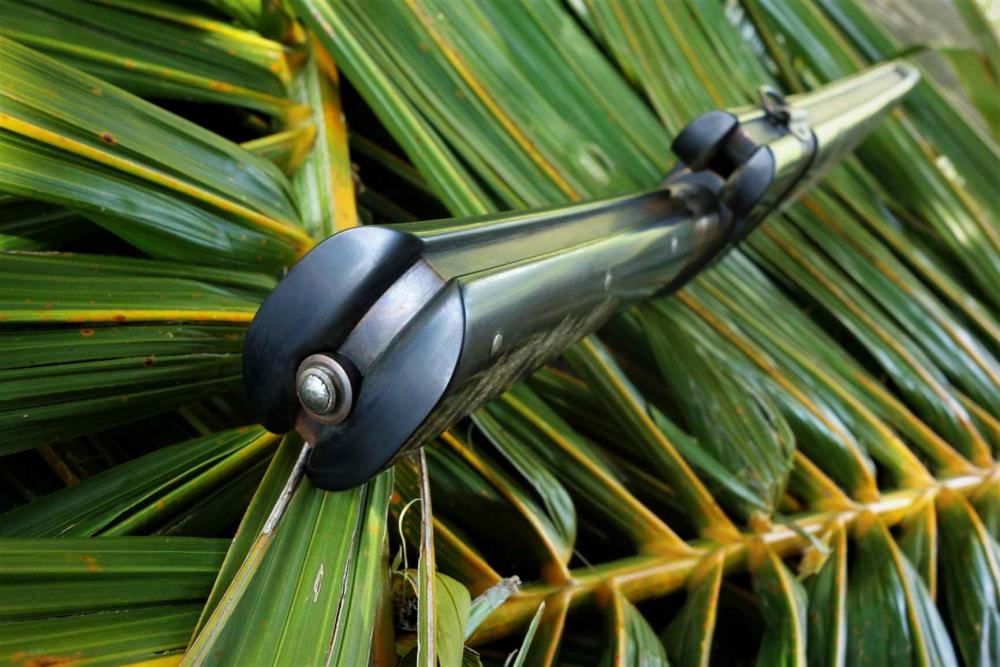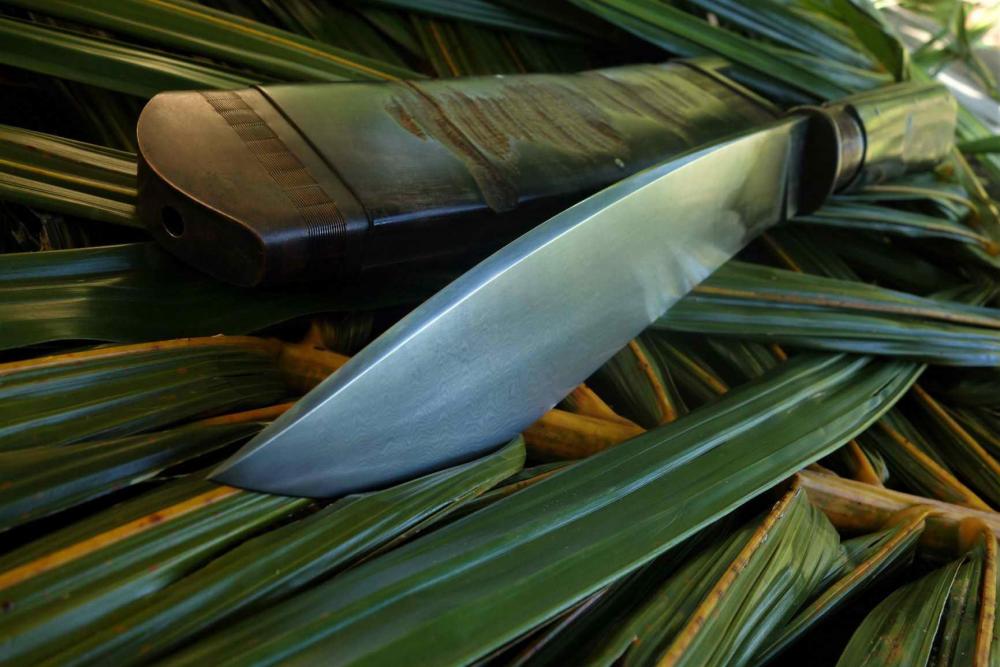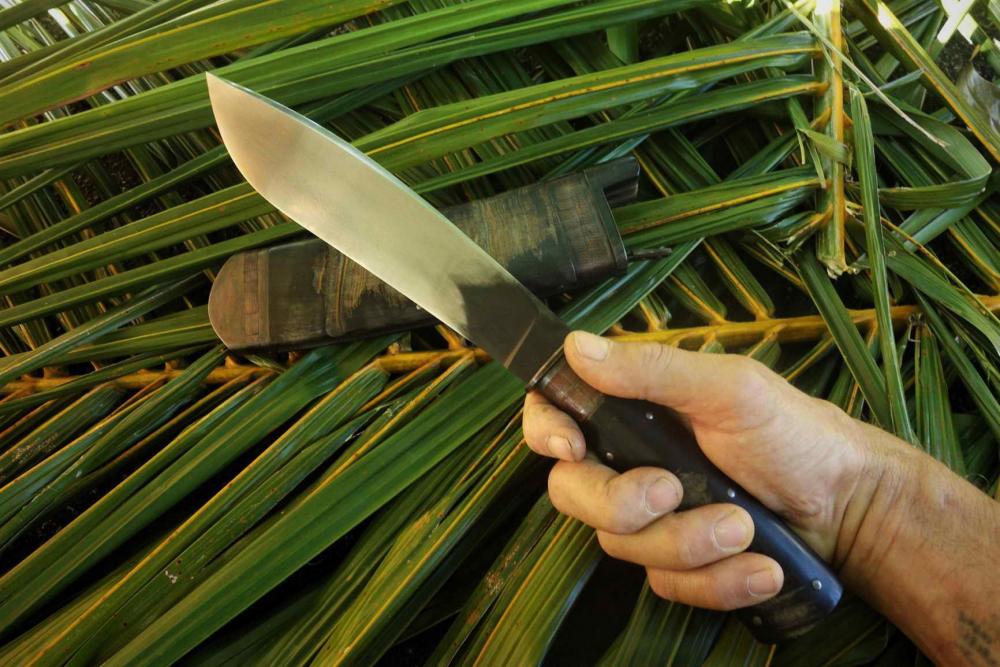-
Posts
448 -
Joined
-
Last visited
Content Type
Profiles
Forums
Articles
Gallery
Downloads
Events
Everything posted by templehound
-
What's your latest blade look like? Post em and let us see.
templehound replied to HondoWalker's topic in Knife Making
Hondo, 99% of reason for failure forge welding is fire control.You have to understand the fact of a reduced fire. first: Take a look at the video of Black Bear Forge, he explains it excellent. https://www.youtube.com/watch?v=j814AqiKVvE second: do not use scrap steel! You are not saving money!! You will be wasting time and! money!Recycling on old leaf springs, shear blades, etc. is more expensive than a few bucks for fresh clean tool steel. and as Thomas pointed out, the error of steel alloys that comes with scrap steel. cheers -
What's your latest blade look like? Post em and let us see.
templehound replied to HondoWalker's topic in Knife Making
Thanks Rhyfelwr, much appreciated Thank You HondoWalker! That Bowie turned out great, You are on the right way! -
What's your latest blade look like? Post em and let us see.
templehound replied to HondoWalker's topic in Knife Making
-
Thanks for the nice comments, Gentlemen!
-
The blade is 300 mm long and forged of 120WNi8V. It is a special steel which is non commercially made by an old friend of mine Thomas Hauschild who works in a steel company. There he experimented and processed on a Damascus component which contains tungsten as well as nickel up to 2%.He gifted me an oblong rectangular chunk which I could forge on into some blades. " Continue kneading it nicely" ...he said Until today it is the toughest steel on a knife blade that I worked with....means easy to forge, grind and finish but resulting in a super tough blade......I wish I had a ton of of it. When it comes to blade material this is the real flesh of gods..... Handle and sheath are made of the same chunk of Merawan ironwood and all fittings are copper.The tang is riveted on the butt forming the center of the flower. Overall length is 450 mm. Stay healthy Cheers
-
Thanks a lot for the fine comments, Gentlemen! It is the flight image of a common buzzard.Its my touchmark since almost 30years. Thanks George N.M.
-
Despite the changes that I made, I tried to stay as close to the originals as possible. The fullered blade is 310 mm long and forged from fresh, non recycled 55Si7 springsteel. The handle is made from Ceylon ironwood. I used mild steel for the ferrule and the tang is riveted over the butt, forming the center of the sterling silver flower. It has a wooden sheath covered with cow leather and the chape is silver plated copper. Instead of a Chakmak sharpener I made a small wood chisel which is more useful to me. The chisel and the small Karda knife are ground from 1.5634 (75Ni8). To save space and keep it more flat they are flat tang with steel pinned Ceylon ironwood scales. The Kukhri weighs 500 grams and its total weight is 750 grams. Cheers
-
Your etch is not deep enough thats because you can wipe it off. Ferric chloride is good for coloring but not good for deep etching. Etch with H2So4(38%, room temperature)to get some depth then etch in ferric chloride to get rhe colors, But cold instant coffee is much better then ferric chloride.....the etch with coffe is more even, it etches faster and it is no chemical poison when it needs to be disposed.
-
-
Thank You, arkie!
-
This knife is designed for the jungle and other tropical environments. Its blade length is 245 mm and it measures 390 mm overall length. For the blade steel I used 1.2442 (115W8), handle and sheath are made from Tropical almond tree (Terminalia catappa) and all fittings are copper. the sheath has a retension spring and the tang is riveted over the butt forming the center of the flower. It weighs 440 grams, with the sheath 720 grams. In the video You can see how it moves and bites as well as it is carried, drawn and put back into the shaeth with one hand. Tested on fully grown, mature bamboo, that starts to turn yellow. Bamboo (like Bambusa bambos(L) Voss) is hard and tough and perfect for testing blade geometry and overall construction. Well...it is rainy season and the cicadas with their high frequency sound never stopped Cheers https://www.youtube.com/watch?v=T5X9o0RPeQg&t=77s
-
I do not worry about when my work inspires other makers, it is rather a great honor, Thank You mate! Thank You boisdarc! JHCC: Thanks for Your clarification, ...it was forgetful not mentioning Pterocarpus soyauxii Thanks all for sharing your experiences and the nice contributions, ! Cheers
-
Thanks JHCC, appreciate Your comment! SLAG: ....first Thanks for Your comment.....now Padouk: Well, what can I say....I used Padouk for 20 years of knifemaking(since I live in Thailand) on dozens of knife handles and I cannot remember a single piece that caused any problems at all. Padouk is one of the most reliable, enduring, forgiving, strong materials I know....in fact it is so good that I use it besides Ceylon iron wood the most. You have to consider a few facts, when judging Padouk: there are the two main types in the Padouk family: Pterocarpus macrocarpus and Pterocarpus Indicus.The first comes out red and the other more golden brown.The Macrocarpus is the harder, but Indicus is also excellent to work with. it comes mainly from two geografic sources, Africa and Asia.The Asian Padouk is significantly harder than African Padouk. Now how it is on the market....there is still industrial collected and treated Padouk means fast dried in shorter time amount(never good at all) and worst of all politically polluted. My Padouk wood is collected by myself in the jungle, the bushes and the fields. When I find them(if I am lucky) the stem is mostly gone only the root is remaining. It is said that the root parts are harder than the stem parts, I can confirm that....(besides it is impossible to get Padouk root comercially) So if I use Padouk it is Asian and from the root.And for me important above all, it is politically clean, the tree is dead and gone long time ago.....no tree has to fall for my knives and I never will be a vulture of dirty logging, I never use wood that I didnt found by myself because anyone can buy, for me and my knifes there is no good spirit in buying comercial tropical woods (no offence to anybody buying, it is everyones own thing how to deal with consciousness).... last but not least harvested by myself it is spiritually good for me. Back to Your Padouk.....it is known that water stains can occur on nearly every wood when, lacking on maintenance...dried out, unoiled.... (and no knife is supposed to be left out there in the rain)....just hypothetically thinking, not saying You did.... maybe it was a piece of commercially fast dried African Padouk or just a bad piece at all resulting in the same bad result and quality.... after all these years of knifemaking experience I say, Padouk is my favourite wood . Your contribution is very appreciated, SLAG Cheers
-
Allround user with padouk, copper ferrule and a blade made from 1.2419.05(130WCrV5) This cold work tool steel is a special alloy coming from my old friend and colleague Achim Wirtz He described it as the 07 on steroids.That description fits just perfect.... Tang is riveted on he butt and the sheath is water buffalo leather and copper for the fittings. Cheers
-
Actually bnewberry showed his newest creation rather than starting a topic about birch bark handles....didnt he? Seven comments, six of them discussing birch bark....I override the birch bark and rather comment on the knife which shows one of the most useful blade and handle shape combinations....vicious convex blade grind and beautifully tapered formed handle! Thats a fine user You made!....on the riveting of tang on the butt I agree with George....there is space for developement Add a secondary washer disk this helps riveting and looks more clean and crafty. Cheers
-
Newbie with a Gough Jig - Thoughts and Observations
templehound replied to Panik's topic in Knife Making
You just started and You are full of impressions....one impression hunts another. Sometimes it is difficult for me to follow every error and trial You have been through, but You do well and above all You pay attention very well and You are thinking.Just collect on all those impressions and with time a lot of questions will be answered by themselfs. Maybe add a jig to get the ricasso even and scribe a middle line.....couldnt tell from the pics if you did when you understand whats happening You dont need filing jigs anymore, you dont want them anymore....there is a point where this technique might slow down your developing skills. because it is easier to compare both sides of the blade and work on them equal if they are not clamped down all the time.....then a belt grinder will come to your mind and you get an idea how to handle its power to serve your understanding so far. al in a nutshell you do very well.....good luck -
As a younger knifemaker I tried different chains to forge weld into a blade, but always as a san mai construction, like Thomas suggested. Because from the view what performance a whatever chain has to bring there are or maybe at least 2-3 different types of steel involved.Chainsaw, motorbike timing chain and outside chains, they all took some hardness but it was obvious that there are parts which are meant only to be tough.So as a mono blade there is in my opinion no edge holding to expect. Another point is the chain outsides on chain san mai will move much faster under the hammer than the core. you have to spot weld overall a few points first to keep them from moving away. I made two san mai blades from I guess what was a motorcycle time chain with an A2 core....I had a hard time to drag the core even with the outside layers, the A2 moved much too slow and I tried not to deform the chain pattern.At the end they look phantastic, like some wild cat camouflage pattern but the A2 core had some cracks......I love A2 but today I would take some steel that forges and welds much easier. And its not so easy to get all the spaces and gaps in that chain package weld shut....today I would look for some 1095 Powder or something like that and canister weld it. The bigger the parts of thechain are the more pattern survives under the hammer blows. With smaller chains like chain saw is much likely that there is nothing left that looks like a chain or pattern at all...it is all squished and crushed....so today I would take big chains a press and then a roller to eliminate the deforming as much as possible. Making such blades requires great effort and is IMHO absolutely nothing for beginners and less experienced knifemakers if they want to have some satisfactory results. But that is only my opinion and experience and in fact I saw through the years awesome looking chain san mai blades at knife shows, of course didnt know something about there performances. ....but like I said ...its not so easy
-
Thanks a lot Guys! Momatt, neither ground nor forged.I cut it with a tool like a Japanese sen. I can show You the cutting head. The handle was just a piece of flat stock mild steel 260x 30x 6 mm with a square cut out in the middle and a M4 screw to fasten the cutting head. That handle is not there anymore, because I had to cut it down to get some bolster material. Due to the Pandemie I could not get to the next town stack up my bolster material so I took the handle.But making a new one is no big deal. I made the head of 1.2562 and gave him a 60Degree angle. Cheers
-
The blade is made from 75Ni8 bandsaw steel with high toughness and has a length of 170 mm. Together with steel pinned sambar scales it results in a very tough combination. Overall length measures 295 mm. The sheath is made from Sea Teak wood and semi tanned leather with a raw hide core. stay healthy Cheers
-
........... https://www.youtube.com/watch?v=nBMzq2GUkjQ&feature=youtu.be
-
Thanks for the nice comments, Guys! Thomas, thats coincidence, its supposed to look like a butt... Cheers
-
The 220 mm long blade is made from Wirtz-Damascus, handle and sheath from Ibex horn and the fittings are copper Overall length is 360 mm. Cheers
-
Here is another semi drop point hunter.....Blade is ground from 1.2442, bolsters and riveted pins are made from some Thai construction crap steel. It was shortly finished after that one...iforgeiron.com/topic/64008-plain-hunter/ which I saw it like wood for the fire now its bone for the earth. Cheers

